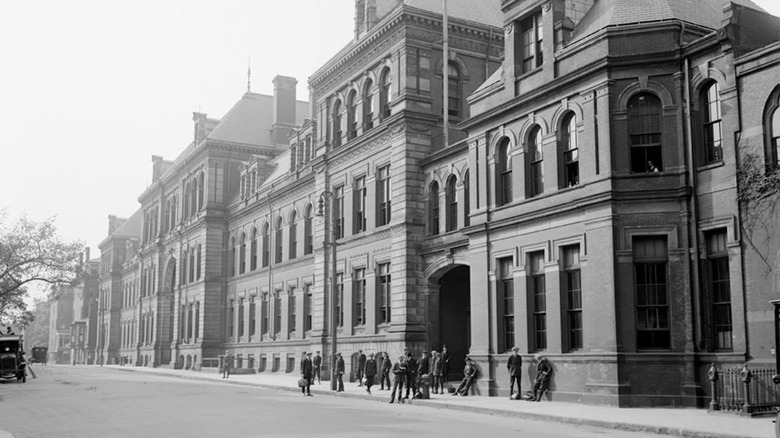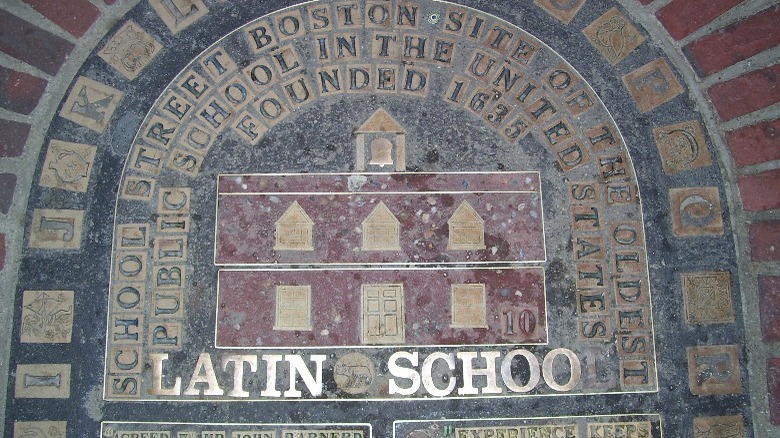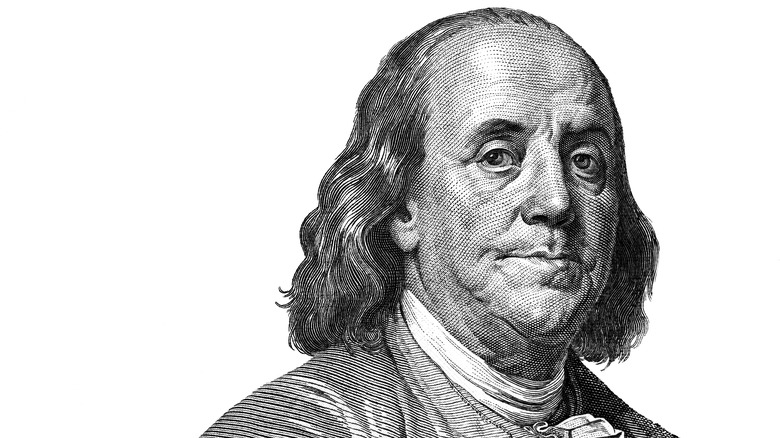When Was The First Public School In America Established?
Long before Horace Mann, the tireless advocate for public education in the mid-19th century, fought to give American children a free education, Boston, Massachusetts saw the opening of the first public school in what would eventually be the United States. The Boston Latin School wasn't only the first public school in the country, it was the first school — period — beating out Harvard College by a year. Heck, there wasn't even a United States when the Boston Latin School opened. But it did play a part in the birth of the country since several of its students would go on to become Founding Fathers.
Even more amazing, the school is still operating today as it has done since opening its doors. The only time it's ever closed was for a few months during the Siege of Boston that took place between April 1775 to March 1776 when Colonial Patriots trapped British troops in the city. But once the British troops evacuated Boston after Gen. George Washington and his troops occupied Dorchester Heights, the school went back to educating the city's young men. The Boston Latin School first opened its doors only five years after the Puritans established the Massachusetts Bay Colony.
[Featured image by BPL via Wikimedia Commons | Cropped and scaled | CC BY 2.0]
Opening day
In the spring of 1665, the town of Boston held a public meeting at which "it was ... generally agreed upon that our brother Philemon Pormort shall be intreated to become scholemaster (sic.) for the teaching and nourtering (sic.) of children with us," via "The Oldest School in America." And with that, on April 23 of that year, the Boston Latin School opened its doors. Well, the doors belonged to the home of the schoolmaster, and classes were held in Pormort's kitchen. As you can see from the quote, the citizens of Boston needed some help with spelling (actually, at the time the English language was still in the midst of becoming standardized).
The popular and influential Rev. John Cotton, a Trinity College grad who'd come to the colony in 1633, had been pushing for a school modeled after the Free Grammar School in his hometown of Boston, England, that focused on the Humanities through the Greek and Roman classics. The new public secondary school, which Boston financially supported, was a boys-only institution (until 1972) and prepared them to attend Harvard once it was opened. The school was free to the city's young men regardless of wealth or social standing.
Famous alumni
Things didn't end well for the school's first teacher, Philemon Pormort, a settler originally from Lincolnshire, England. He ran afoul of the colony's church elders after he began following Anne Hutchinson, a spiritual leader whose teachings went against Puritan orthodoxy. The church fathers sent Pomort, like the woman he followed, away for his beliefs. The school, on the other hand, thrived, with the building of a schoolhouse in 1645 and a growing list of famous students.
Among the Boston Latin School's many alumni were three of America's Founding Fathers — Samuel Adams, John Hancock, and Benjamin Franklin. Franklin didn't actually graduate. He was America's first famous dropout, among his more notable accomplishments. Two other signers of the Declaration of Independence also attended the school: Robert Treat Paine and William Hooper. In more recent times, Boston Latin School grads have included Joseph Kennedy — the father of President John F. Kennedy — conductor Leonard Bernstein, and philosopher George Santayana. The school is still up and running and is located near Boston's Fenway Park.


